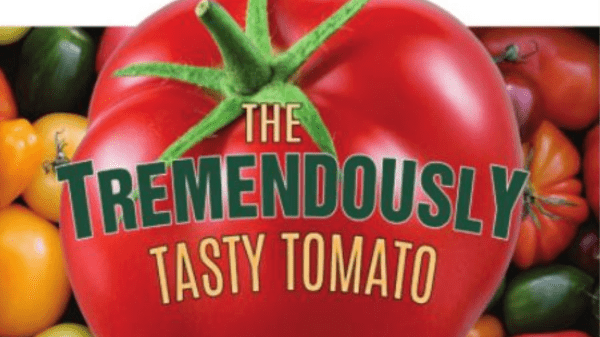Love apple? Wolf peach? Call it what you may, the tomato is one of the world’s most popular produce items whether it’s eaten raw, cooked, or juiced.
More than 180 million metric tons are produced globally to fill the world’s appetite for the fruit. Yes, botanically speaking, the tomato is a fruit—specifically, a berry of the Solanum lycopersicum plant native to South America—but most people and the U.S. Department of Agriculture (USDA) consider it a vegetable.
Widespread consumption
Today, the tomato is the second most commonly consumed vegetable in the United States behind the potato.
This is clearly evident in the numbers for consuming this traditionally red, round favorite (though today’s tomatoes come in multiple shapes, sizes, and colors): domestic per-capita fresh tomato consumption has risen from about 13 pounds in 1980 to nearly 20 pounds in 2020.
The increase is likely the result of greater consumer awareness of healthy, nutritious foods (espoused especially by millennials and Gen Zers), the plethora of new varieties and colors, and ample year-round availability.
Canadians and Mexicans love their tomatoes too, ranking as the third most popular vegetable behind lettuce and onions (dry and green) in Canada, and coming in behind green chiles and potatoes in Mexico.
Top Growing Regions
What may surprise some is that China is the largest tomato-growing country, producing 35 percent of the world’s tomatoes, according to the Food and Agriculture Organization of the United Nations.
India is the second-largest producer of tomatoes, while the United States is ranked third.
California and Florida lead the United States in the value of utilized tomato production followed by Tennessee, Ohio, and South Carolina. In honor of the tomato’s position as the leading fresh produce crop in Tennessee, the state’s legislature adopted the tomato as the official state fruit in 2003.
About 42 percent of tomatoes consumed in the United States are fresh market tomatoes. The balance of consumption comes from tomatoes processed into a myriad of sauces, pastes, beverages, and condiments.
Tomatoes: U.S. contributions
When it comes to production in California, more than 90 percent of each year’s harvested crop is grown for processing. The state’s Central Valley is the top producing area.
Fresno, Yolo, Kings, Merced, and San Joaquin counties together accounted for 74 percent of the total 2020 processing tomato tonnage in California.
The severe drought and water shortages in California the last few years have taken a toll on tomato acreage. Extreme heat this past summer forced growers to harvest early.
In June, the USDA’s National Agricultural Statistics Service lowered its 2021 estimate for acreage planned for processing from 240,000 to 231,000.
Sunshine State fruit
Florida produces virtually all of the nation’s fresh market, field-grown tomatoes from October through June each year, and accounts for nearly half of all fresh tomatoes produced domestically, according to the Florida Tomato Committee, based in Maitland, FL near Orlando.
Most tomatoes grown in Florida are rounds, which are in high demand for foodservice, and are field grown. Generally, they’re harvested green and treated with ethylene gas for ripening.
Major growing regions include the southwestern and Tampa Bay areas of the Sunshine State. In 2020, 25,000 acres were planted, of which 24,000 were harvested.
The crop was valued at $463 million—the highest in a decade—but tomato production was the lowest for that time period due to imported fresh tomatoes from Mexico being absorbed into the market.
Decreasing production has taken a toll on the industry in Florida.
Elmer Mott, vice president of Collier Tomato & Vegetable Distributors, Inc., BB #:126248 a brokerage firm in Arcadia, FL, has been in the tomato business for 45 years. He remembers when there were three times as many tomato packinghouses in Florida as there are now.
“In the 1980s and ’90s, there were 23 or 24 packinghouses; now there are only 8 or 9,” he says. Mott believes the trend will continue until there are only a handful left.
Collier Tomato & Vegetable deals with all varieties of tomatoes, which are shipped to repackers for the retail and foodservice industries. This includes exports to other nearby countries: “We export some to Puerto Rico, Canada, and Trinidad and Tobago,” he says.
The company’s supply comes from Florida unless the needed sizes and colors are not readily available.
As a traditionalist, Mott prefers field-grown tomatoes; but, he notes, “Florida is caught between a rock and a hard place—Mexico continues to increase volume and I don’t see any reason that will decrease.”
This is an excerpt from the Tomato Spotlight in the November/December 2021 issue of Produce Blueprints Magazine. Click here to read the whole issue.



